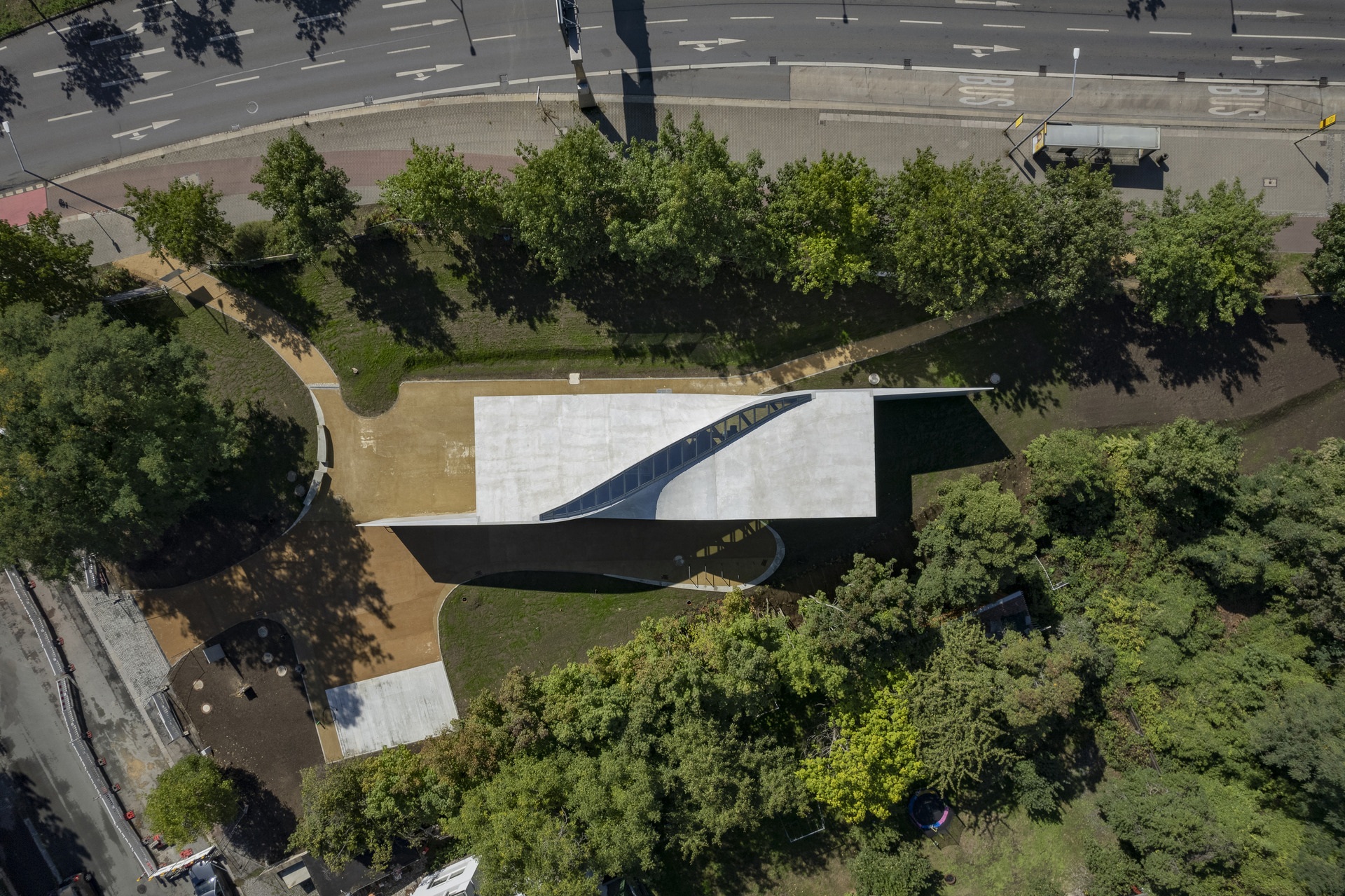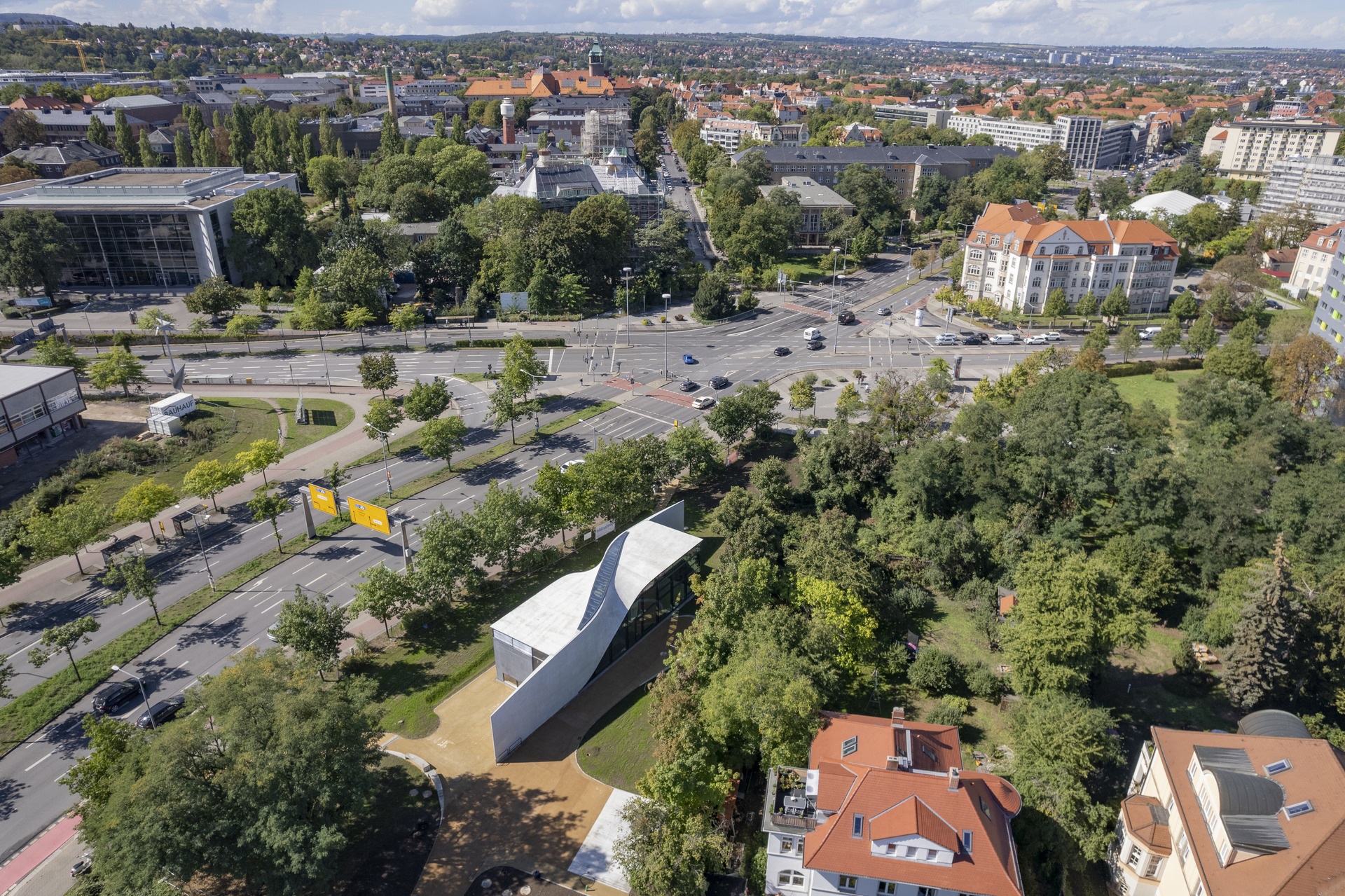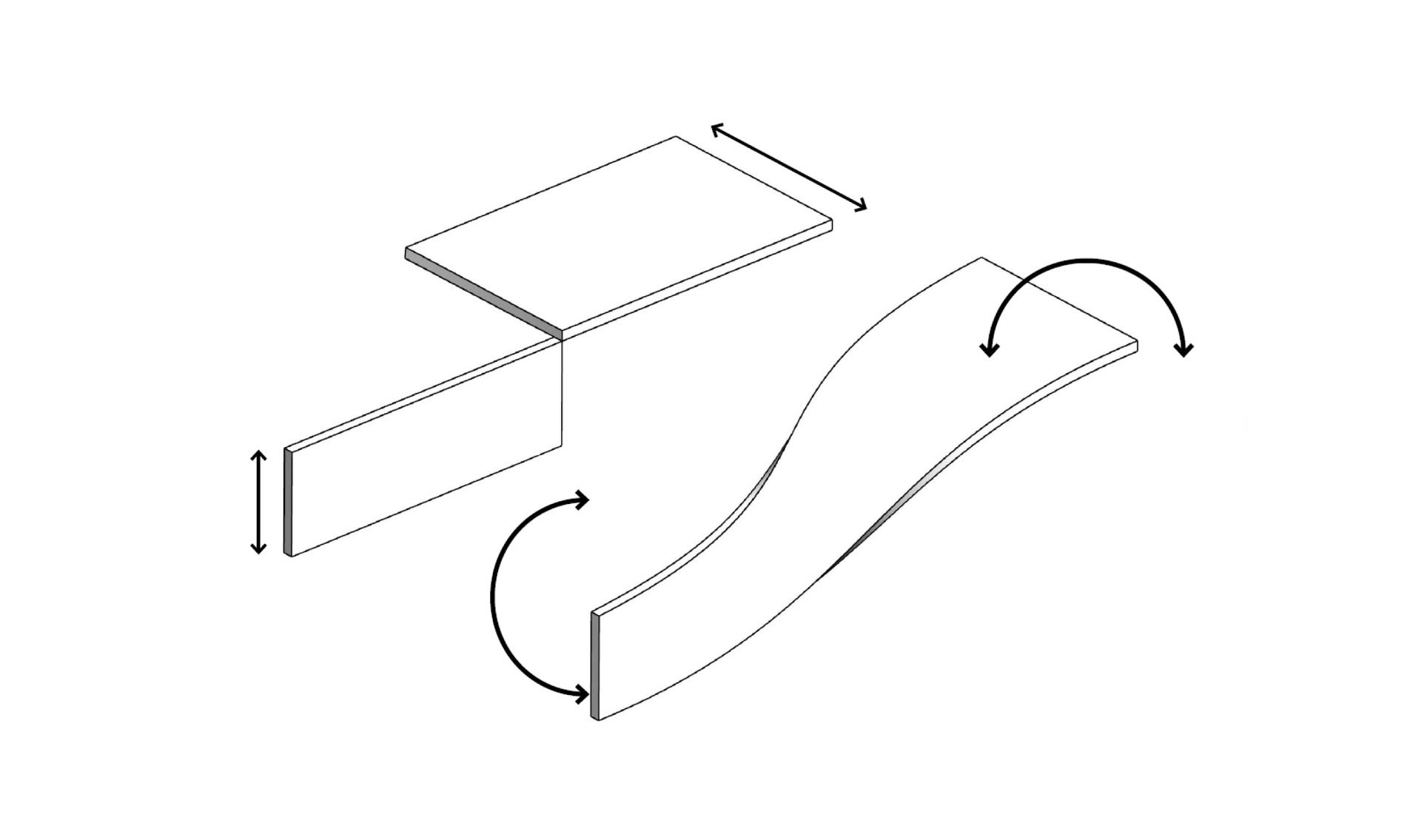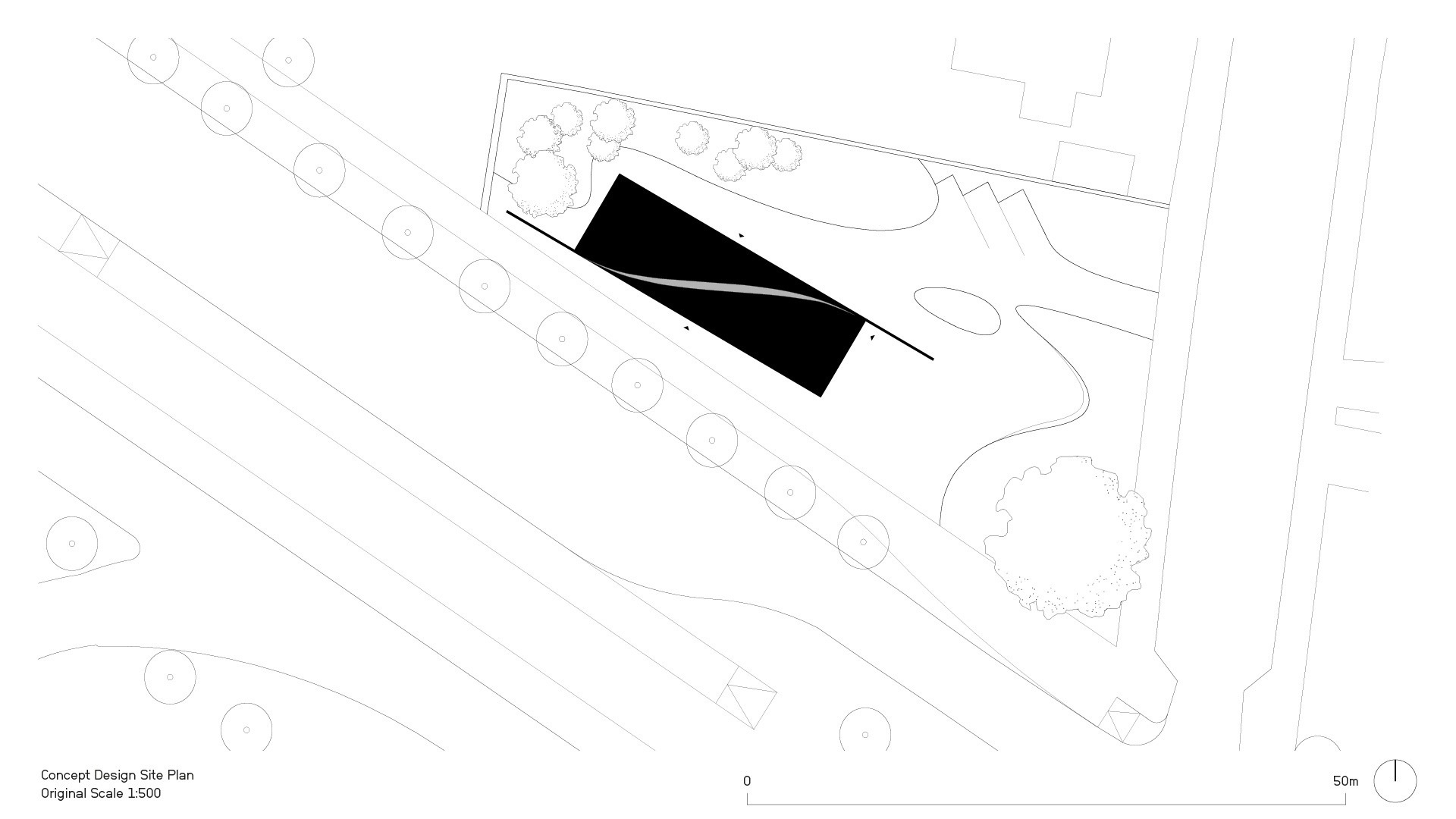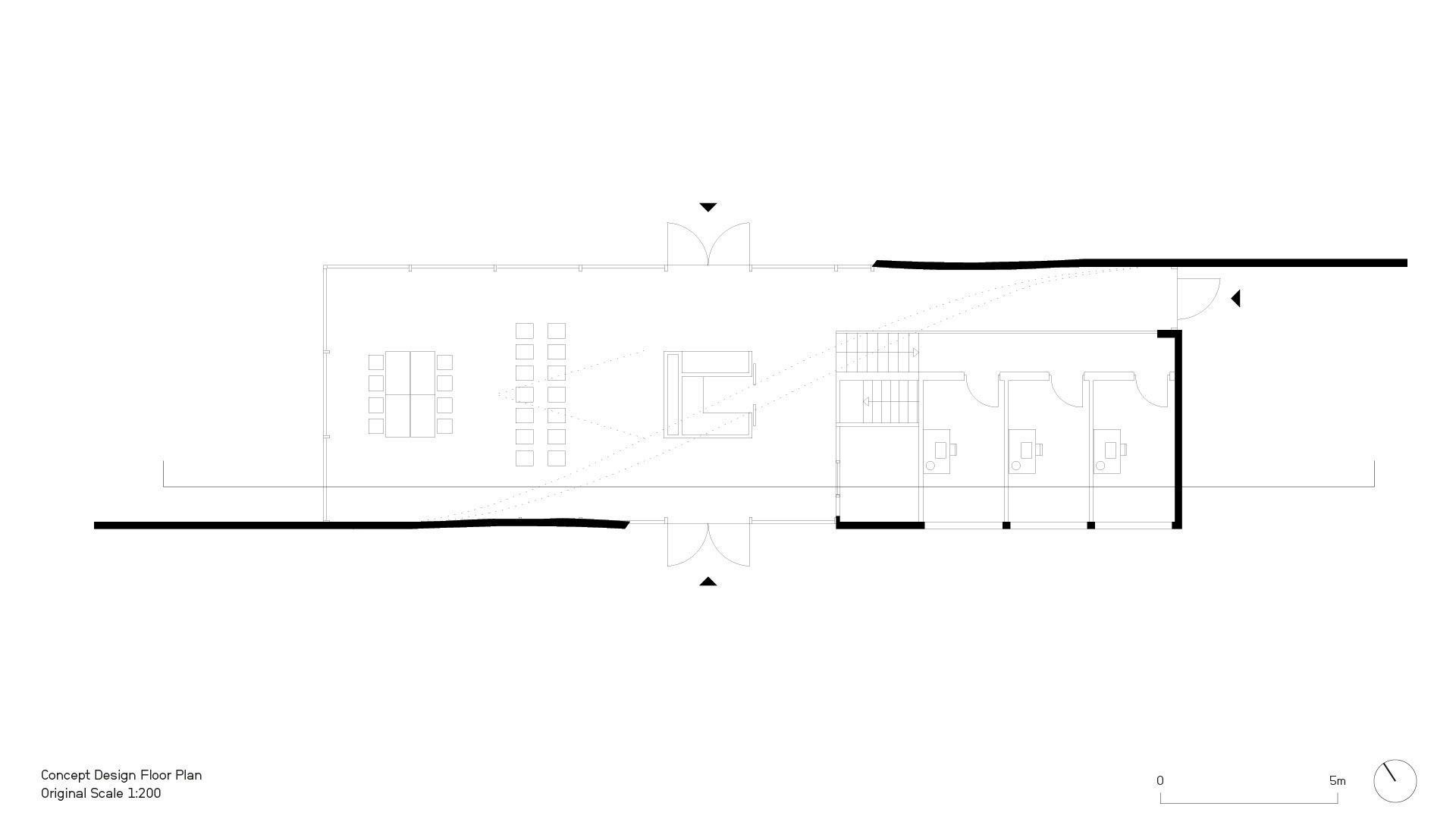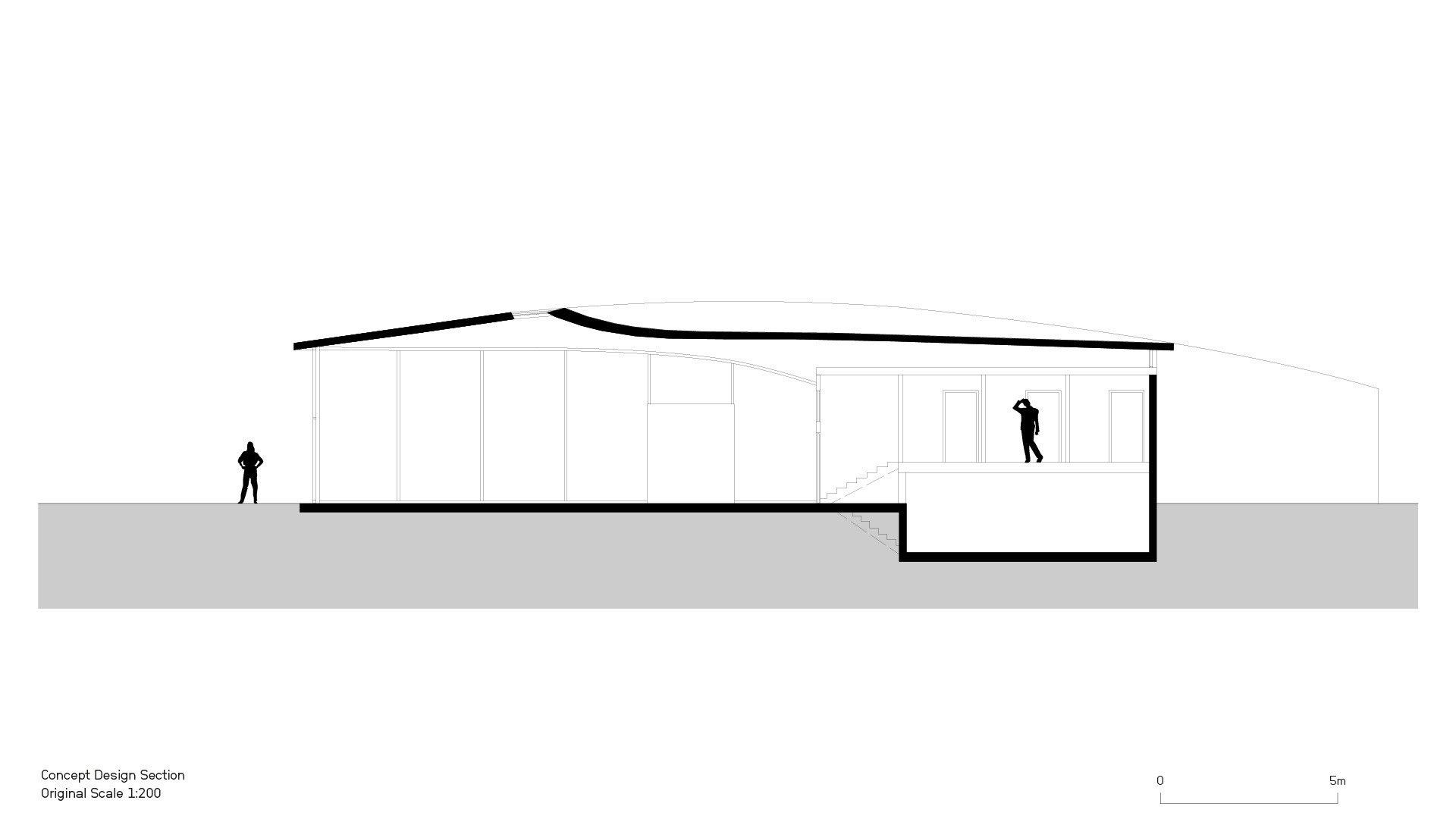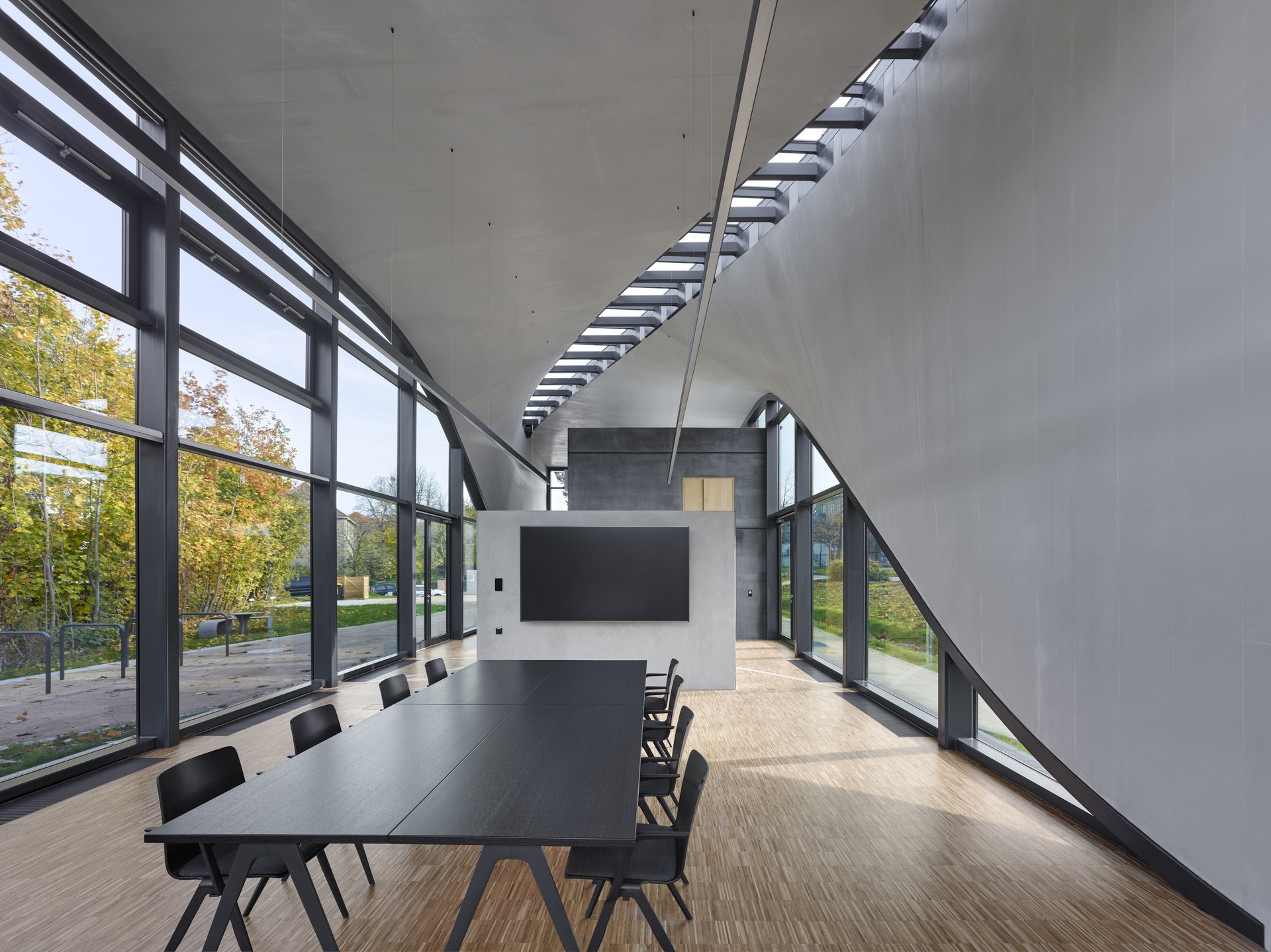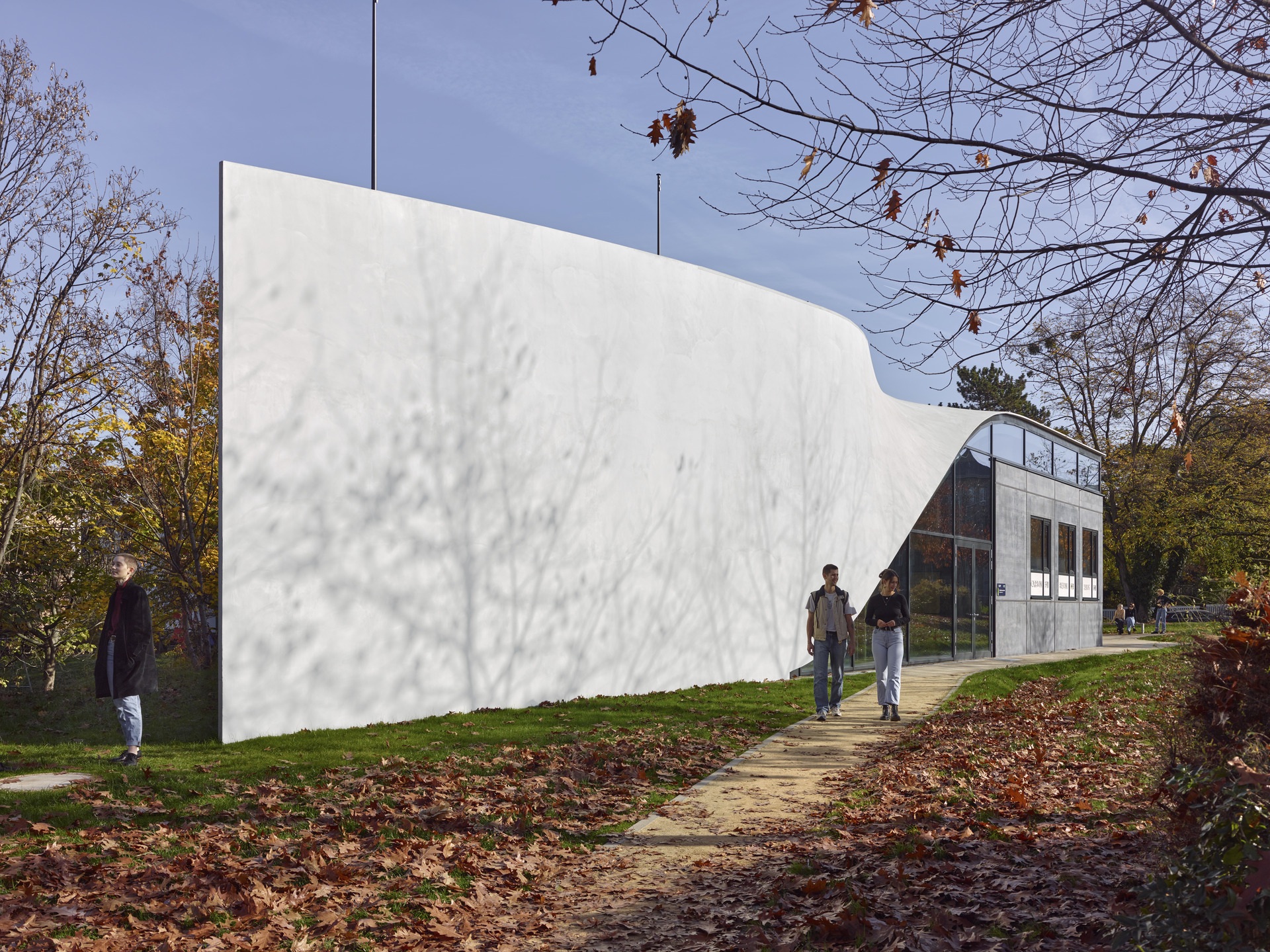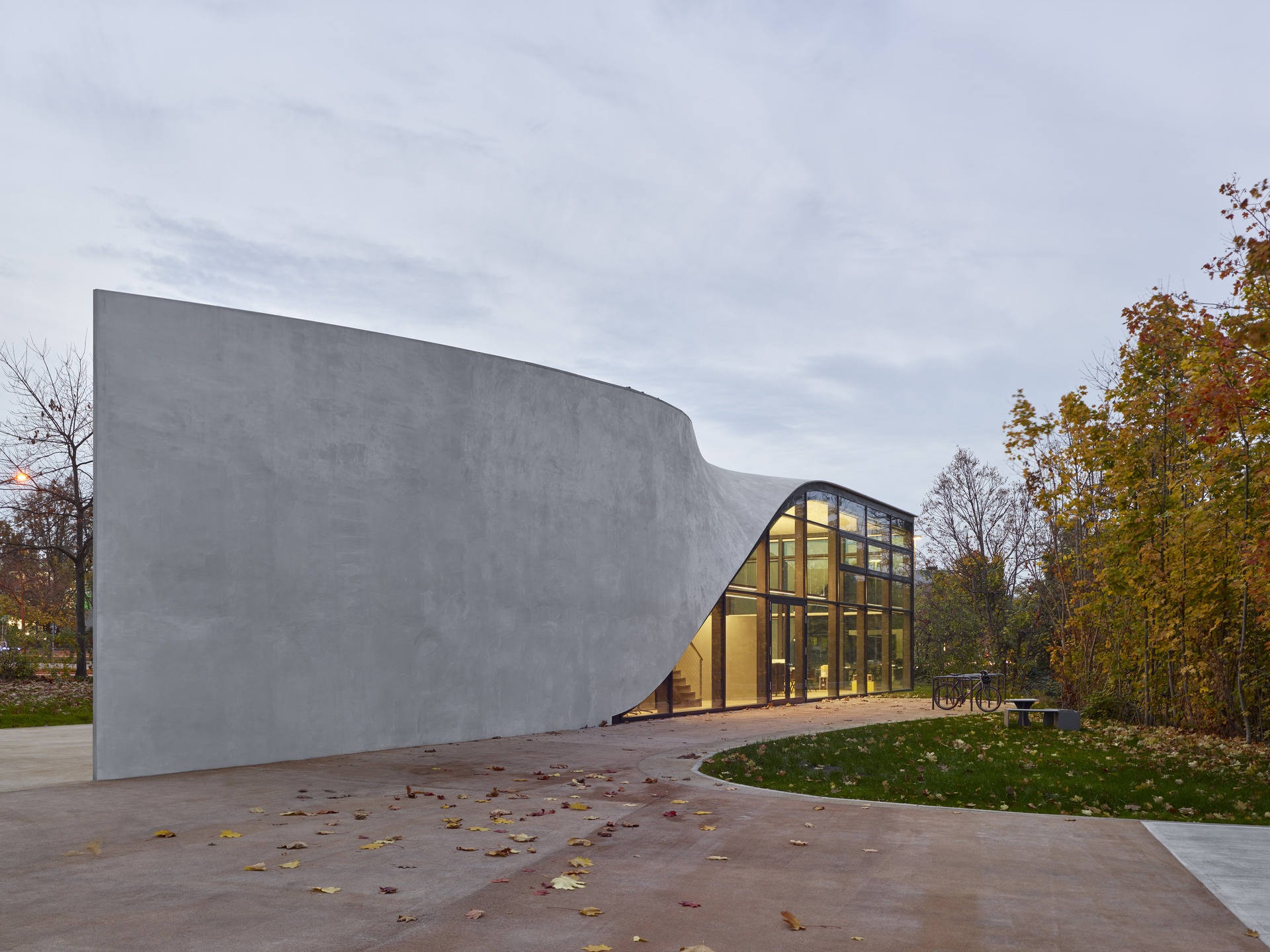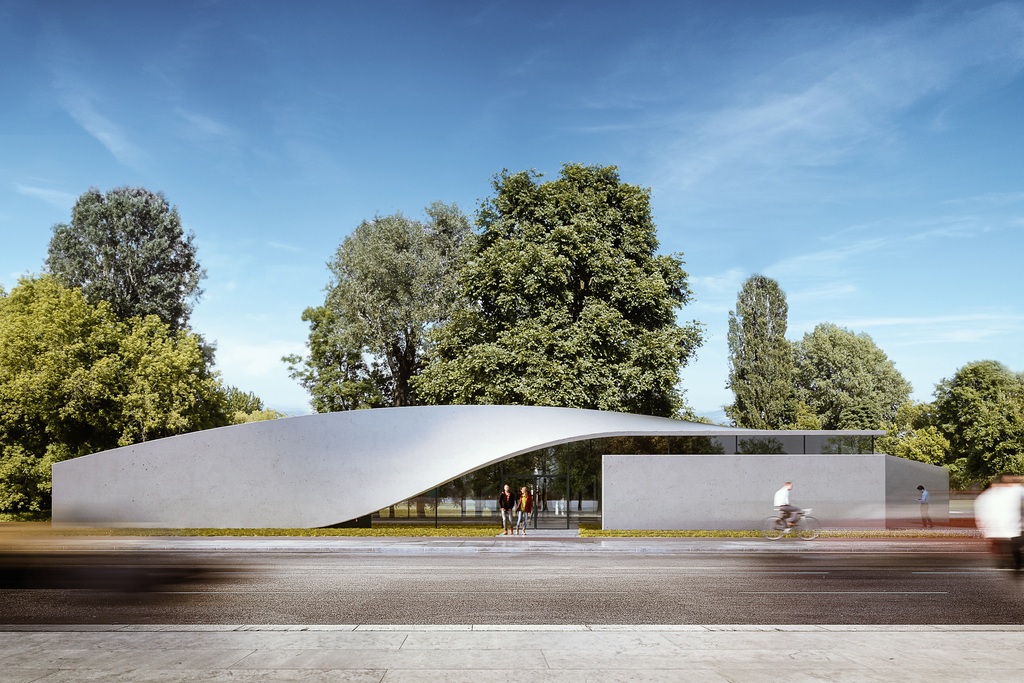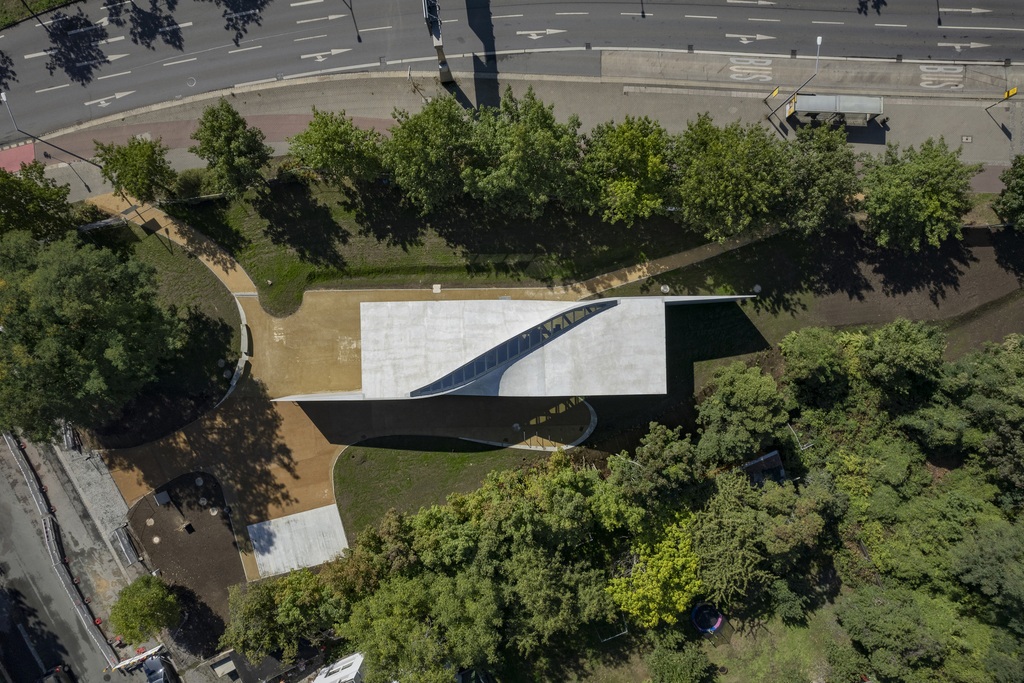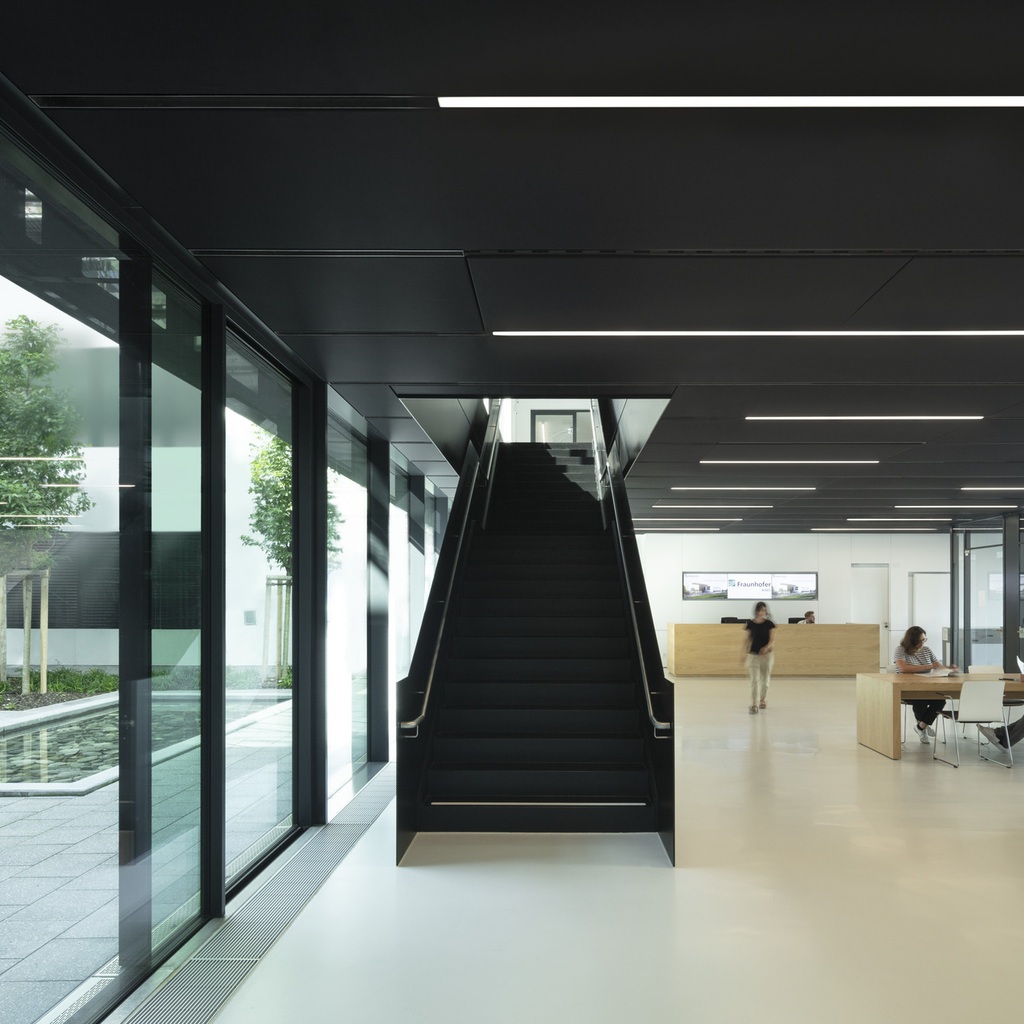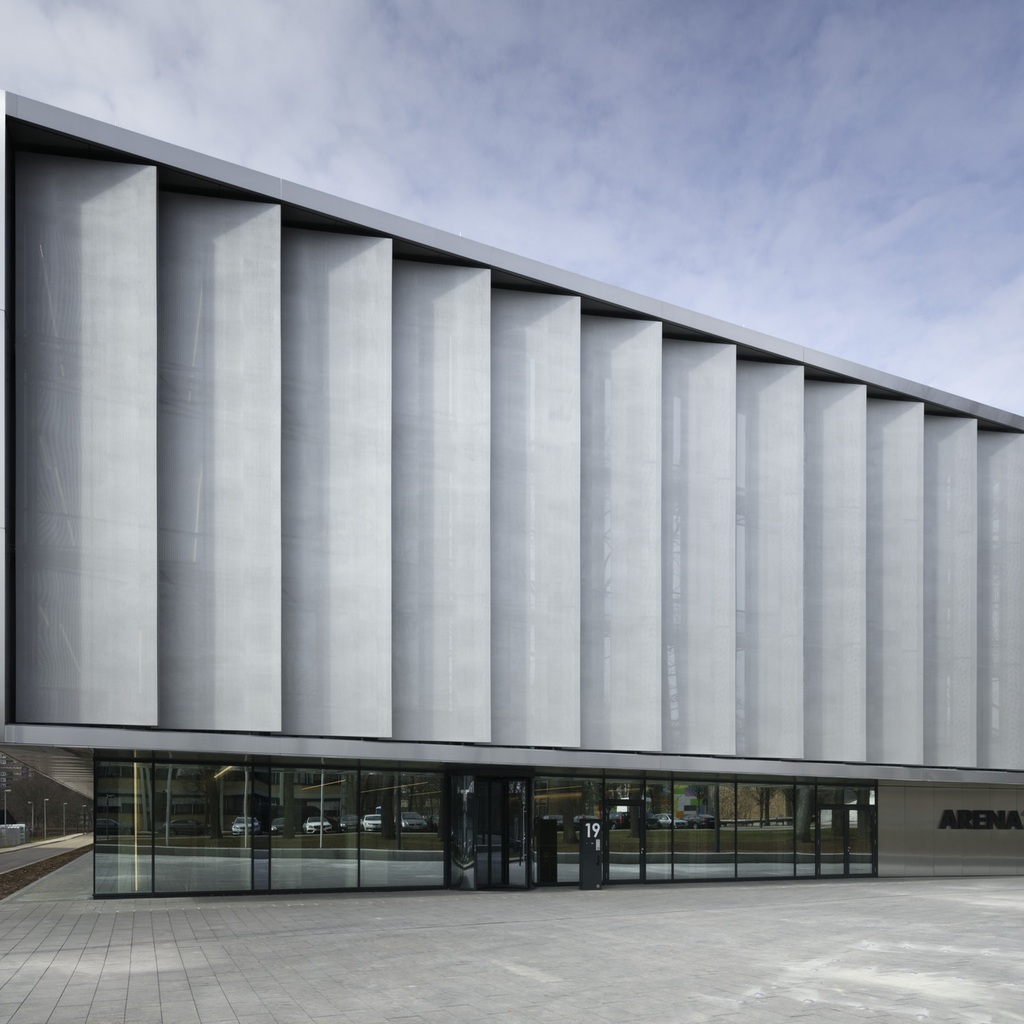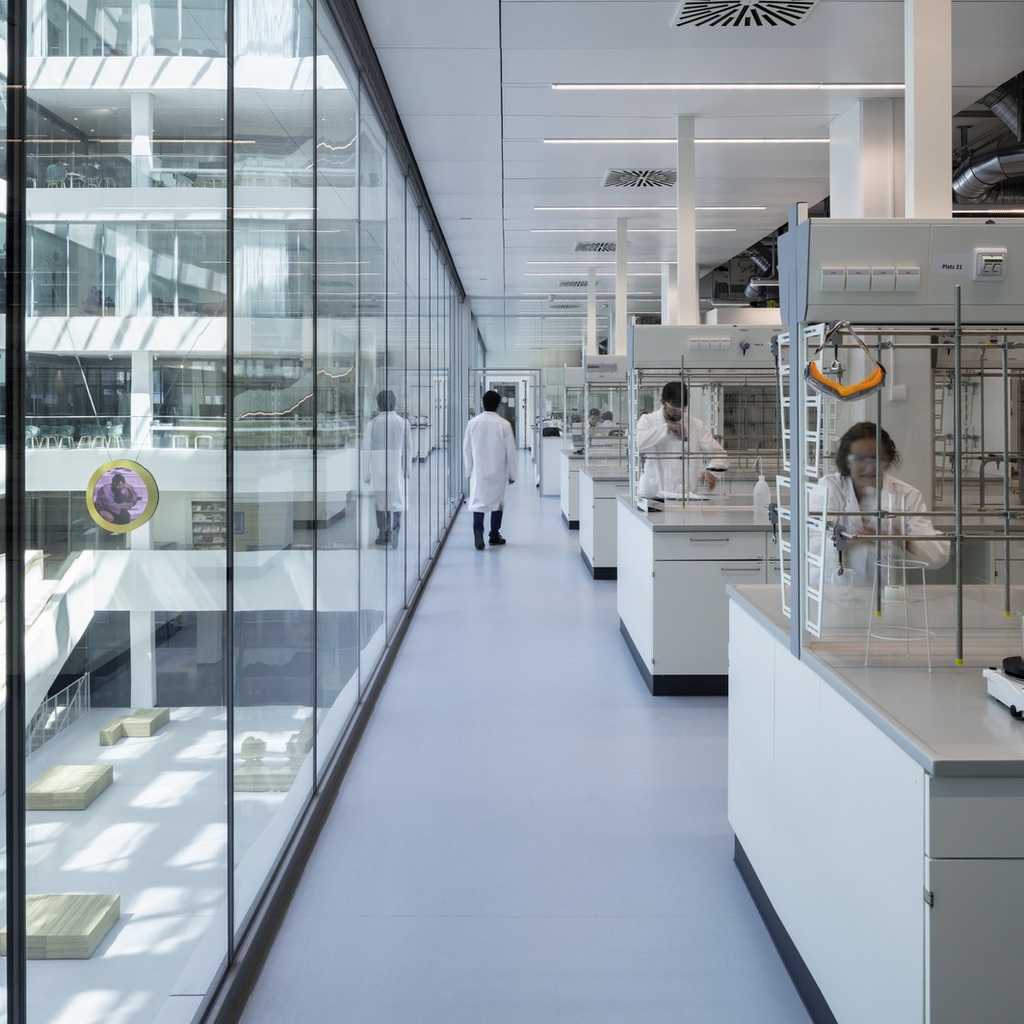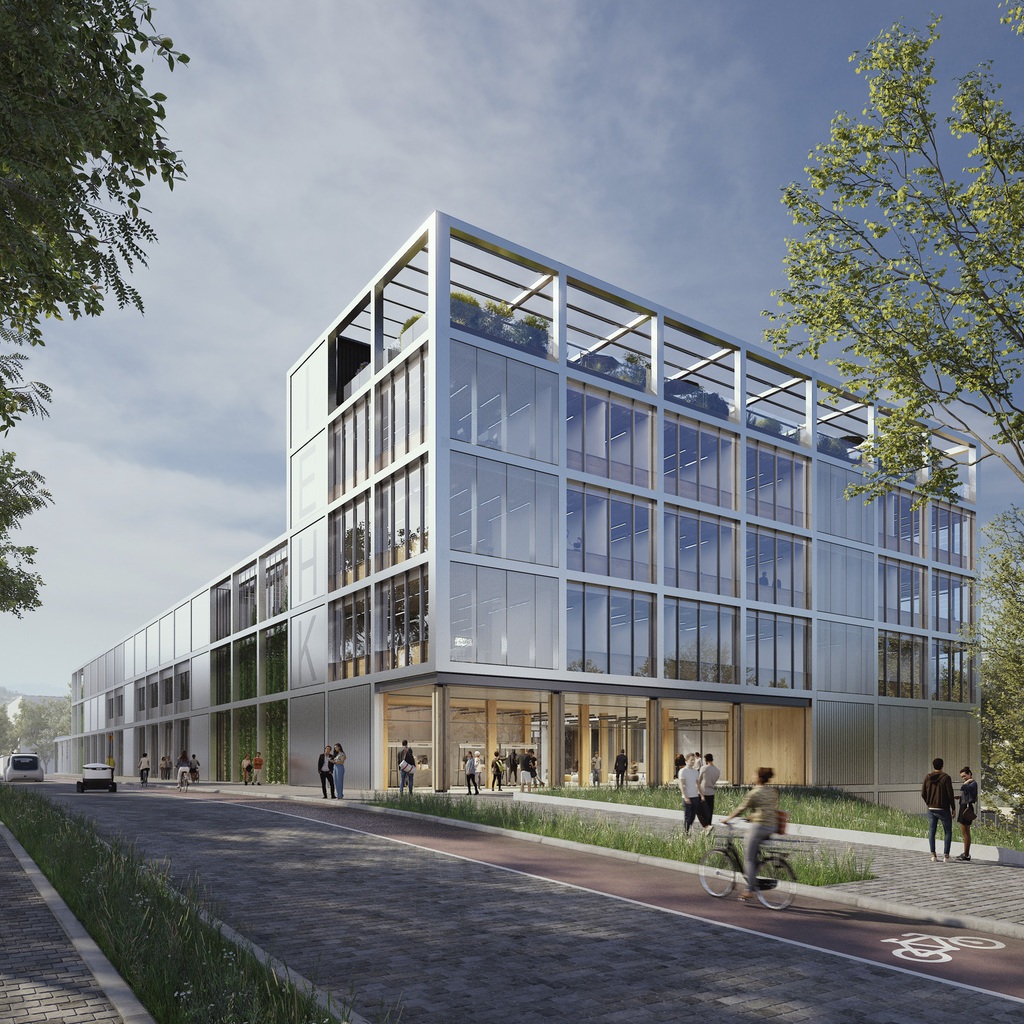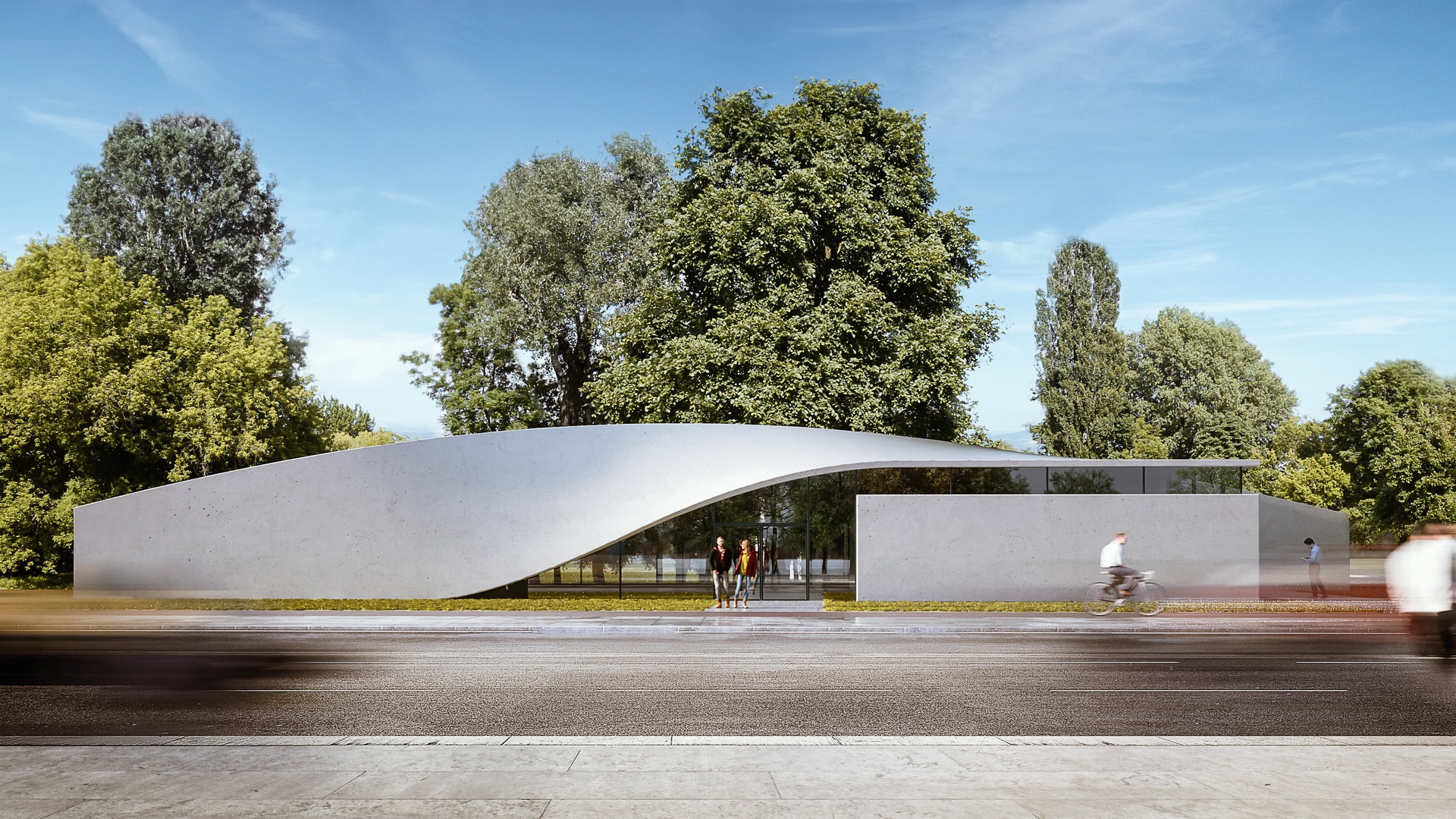
CUBE
HENN has developed the concept design for the world's first building made of carbon concrete, the CUBE. The 243-m2 experimental building combines a laboratory and event rooms, and sets an example of architectural and structural innovation at the Technical University of Dresden (a German "University of Excellence").
Reinforced concrete is the world's most used building material, but its production is resource-intensive and polluting. Carbon concrete can drastically minimize resource consumption, as it can be up to four times lighter (because of the reduced structural sections) and four times stronger than regular concrete.
Centrally located on Fritz-Foerster-Platz, at the heart of the university campus, the building combines laboratory and assembly functions and fosters intellectual exchange by increasing accessibility to research. The development of The CUBE was the result of a collaborative process involving Professor Manfred Curbach and his Institute for Solid Construction at the TU Dresden, as well as designers, architects and experts for material performance, visualizers and model builders from architectural office HENN. The open design process allowed for various technical tests and design research tracks to happen in parallel, contributing to both a successful experiment in material science and an innovative architectural project.
The design of The CUBE reinterprets the fluid, textile nature of carbon fibres by seamlessly merging the ceiling and walls in a single form, suggesting a future architecture in which environmentally-conscious design is paired with formal freedom and a radical rethinking of essential architectural elements. The wall and ceiling are no longer separate components but functionally merge into one another as an organic continuum. A narrow opening runs diagonally across the entire volume, emphasising the building’s geometry and creating bright skylights across all spaces.
The CUBE is a showcase project for a larger research program on innovative building materials called "C3 - Carbon Concrete Composite", financed by the German Federal Ministry of Education and Research, which looks into the potential applications of carbon concrete. Carbon concrete could contribute to more flexible and resource-saving construction processes, and switching to carbon concrete could reduce the CO2 emissions from construction by up to 50%. With The CUBE, HENN is making a significant contribution to the development and implementation tomorrow's construction technologies.
Key Info
Collaboration Partners
AIB GmbH Architekten Ingenieure, Betonwerk Oschatz GmbH, Akustik Bureau Dresden Ingenieursgesellschaft mbH, Assmann Beraten & Planen GmbH, Baugrund Dresden Ingenieurgesellschaft mbH, Büro für Arbeitssicherheit - Hans-Jürgen Stöber, Ingenieurbüro Scheffler & Partner GmbH, Ingenieurbüro für Abwasser und Umwelttechnik, Carbon Concrete Composite e. V., Texton e.V., Dipl.-Ing. H. Bendl Hoch- und Tiefbau GmbH & Co. KG, Bundesministerium für Bildung und Forschung, Hochschule für Technik, Wirtschaft und Kultur Leipzig - Institut für Betonbau, Technische Univeristät Dresden – Institut für Massivbau
